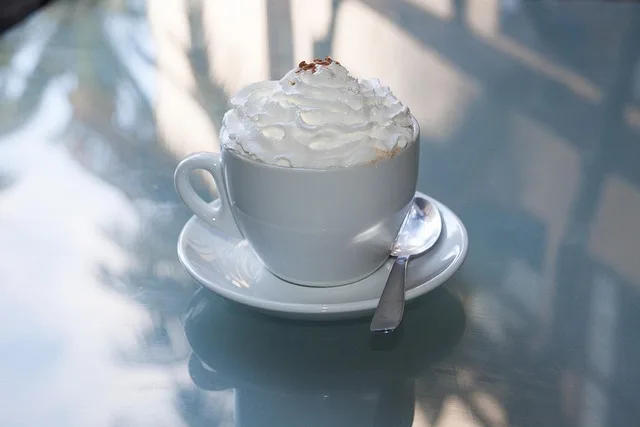
You have baked a perfect, soft, and spongy cake and now you add improperly whipped cream in it for the topping. Don’t you think it will be the worst combo, and it will spoil the whole taste?
If you find your cream does not whip evenly and you did not obtain a soft and airy texture, the reason can not be the one, but it could be many.
Many people take the whipped cream canister and dispenser to whip the cream and end up in a grainy, clumped, thin, and runny cream but not whipped.
Here we will discuss those mistakes that lead to the formation of imperfectly whipped cream. We will also discuss how you can avoid those mistakes while making whipped cream.
Your cream is not chilled:
Using the right nature of cream of perfect consistency but still not getting a fluffy cream?
The reason must be the temperature of the cream. Keeping the crema at room temperature before whipping is the most important reason for getting runny cream.
When the temperature of cream drops below 10 degrees, the fat fails to emulsify, and the air particles do not trap between the molecules.
What do you need to do for the whisky cream? Refrigerate the cream for 20 to 30 minutes before starting the whipping process. Also, chill the bowl or other utensils you use during the process. Putting the chilled cream in a warm bowl affects the emulsifying property of fat. Cool down the bowl before pouring cream into it.
Keep the bowl in for chilling for at least 1 hour and quickly start the process after removing the cream and utensil from the refrigerator.
The cream has imperfect consistency:
Looking at the consistency of the cream is also crucial for whipping the cream perfectly. Cream that is too thick can not whisk, so you need to have heavy cream like whipping cream, whose fat content is around 26 to 36%.
All-purpose cream is a handy solution for making or baking different types of desserts, but it does not whip due to its high thickness and low-fat content.
The cream shouldn’t be too thin. The consistency of cream should be thicker than milk and thinner than all-purpose cream. Single or half-and-half cream will not be appropriate for whipping purposes.
You are not adding sweetener at the right time and in the right amount:
If you are using an electric beater for whipping cream, avoid adding sugar at the start of the process. The sugar releases water. Thus the cream becomes loose or runny instead of thick and fluffy. Add sugar when the cream starts making peaks. Don’t use granular sugar because it will leave the grains, and the cream will become too thin. After adding sugar, beat the cream until you get the desired consistency.
If you are using a whipped cream charger or dispenser, you need to add powdered sugar and cream at a time in the dispenser.
Not only the time of adding sweeteners is important, but the amount also decides the taste of the dessert, so it is necessary to keep the amount of sweetener balanced.
You are not using the right utensil:
Like choosing the right cream, the selection of the right bowl is also essential. Selecting a bowl made of material that will react with the cream can nullify your effort. A Bowl made of glass and metal is highly recommended for whisking the cream.
You can also use plastic if you don’t have a glass or metal bowl. A Bowl made of copper is really disastrous for you. Along with considering the material of the bowl also considers the size of the bowl. Using a small bowl for whipping does not give enough space for the cream to trap the air.
Now it is old to whisk the cream using a hand beater, but still, if you are using it, don’t try to whip with the wooden spatula. A hand mixer designed for the purpose helps to incorporate more air than a wooden spoon.
You have over-whipped the cream:
Just like there is a set point for boiling rice or cooking pasta, there is a tipping point for cream whipping. Over and under-processed cream does not trap enough air, so the cream becomes less creamy. Overwhipping gives the cream a grainy texture. You can avoid overwhipping by checking the cream consistency repeatedly.
Once the cream achieves a soft peak and holds the shape for a few minutes, this is the sign your task has been done. Over Whisked cream is not a waste, use can give it the required consistency by adding a spoon of cream.
You are using the cream too quick or too late:
Do not put the cream over the freshly baked hot cake or dessert. If you place the freshly whipped cream on the hot dessert, the cream will melt, and all your effort will go in vain. So, until the dessert cools down, you need to wait.
Leaving the cream at room temperature for a long time, especially on hot summer days also disturbs consistency. If you whisk the cream before baking, keep the whipped cream in the refrigerator for a few hours until the dessert temperature goes down.
- Sagittarius Man & Gemini Woman Love and Sex Compatibility - January 31, 2024
- Taurus Ascendant Rising Personality Traits in Men (Guide) - January 31, 2024
- How to Seduce and Attract a Sagittarius Man (Seduction Tips) - January 31, 2024
